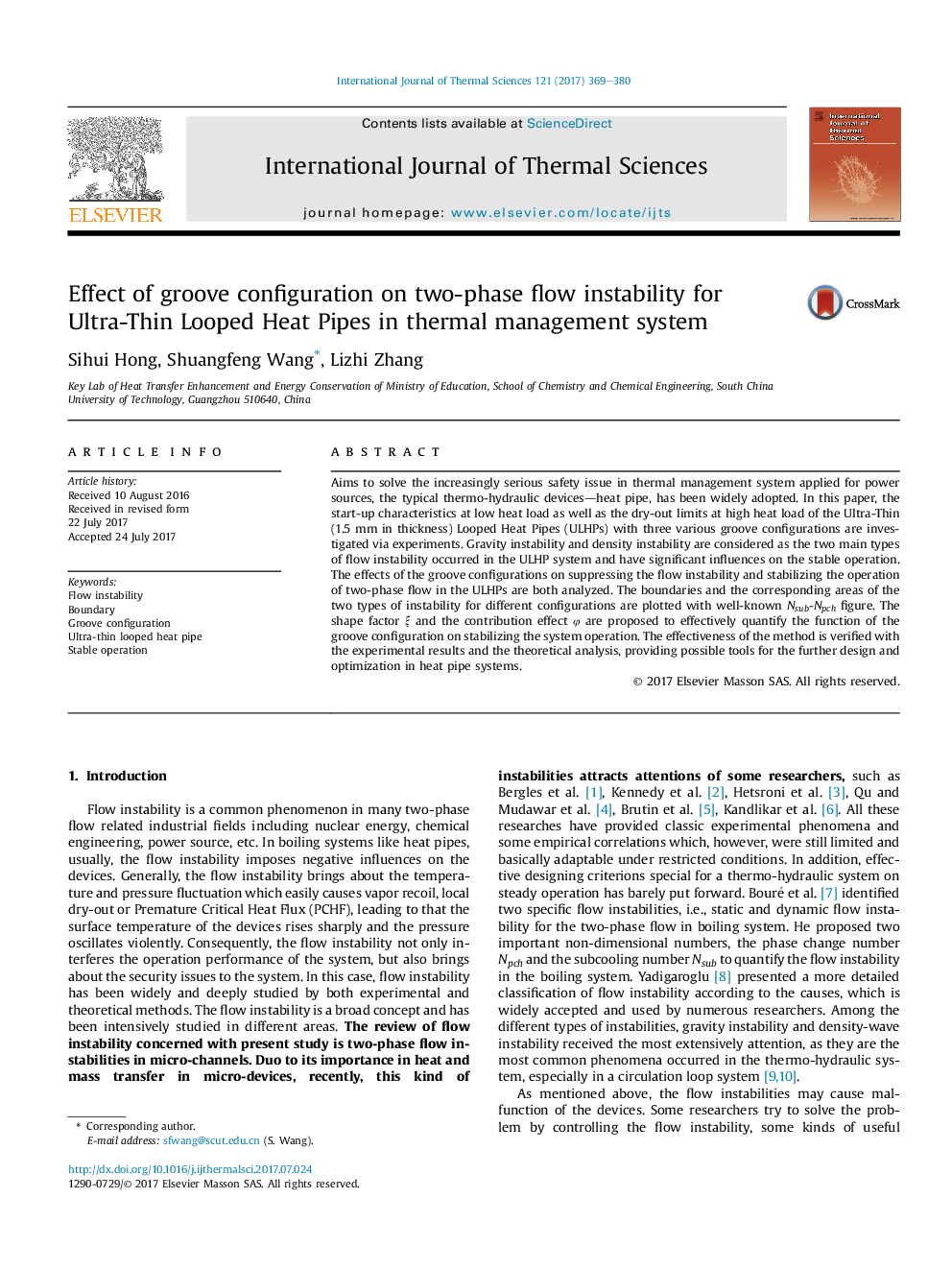| Article ID | Journal | Published Year | Pages | File Type |
|---|---|---|---|---|
| 4995176 | International Journal of Thermal Sciences | 2017 | 12 Pages |
Abstract
Aims to solve the increasingly serious safety issue in thermal management system applied for power sources, the typical thermo-hydraulic devices-heat pipe, has been widely adopted. In this paper, the start-up characteristics at low heat load as well as the dry-out limits at high heat load of the Ultra-Thin (1.5 mm in thickness) Looped Heat Pipes (ULHPs) with three various groove configurations are investigated via experiments. Gravity instability and density instability are considered as the two main types of flow instability occurred in the ULHP system and have significant influences on the stable operation. The effects of the groove configurations on suppressing the flow instability and stabilizing the operation of two-phase flow in the ULHPs are both analyzed. The boundaries and the corresponding areas of the two types of instability for different configurations are plotted with well-known Nsub-Npch figure. The shape factor ξ and the contribution effect Ï are proposed to effectively quantify the function of the groove configuration on stabilizing the system operation. The effectiveness of the method is verified with the experimental results and the theoretical analysis, providing possible tools for the further design and optimization in heat pipe systems.
Related Topics
Physical Sciences and Engineering
Chemical Engineering
Fluid Flow and Transfer Processes
Authors
Sihui Hong, Shuangfeng Wang, Lizhi Zhang,
